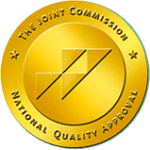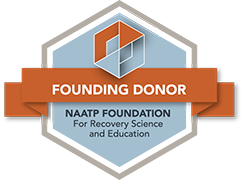Relapse Prevention & The 12 Steps: What You Need to Know
Relapse prevention is a crucial part of addiction recovery, but it happens gradually. Those in recovery learn of the strategies, coping mechanisms and resources needed to work through troubling emotions such as with anger, guilt, sadness and more. It takes time to learn more about our cravings and triggers, as it’s something that we can’t fully understand until we’re faced with it.
Types of Relapse
A 2015 study published in the Yale Journal of Biology and Medicine explained 3 types of relapse: emotional, mental, and physical. The following are descriptions of each:
Emotional
Bottling up emotions, isolating oneself, not going to 12-Step meetings, attending 12-Step meetings but not sharing or participating, focusing on others’ problems rather than their own, and poor eating and sleeping habits are some of the crucial indicators of an emotional relapse. The authors note that neglect of self-care is an underlying component of this type of relapse, which makes it critical that those in recovery practice engaging in meaningful activities, taking care of basic needs, being kind to themselves and more.
Mental
Cravings for drugs or alcohol, thinking about people or places that remind the person of past substance use, minimizing the consequences of past substance use or even glamorizing it, bargaining (“instead of using X drug, I could use this since it’s not as bad…”), lying, thinking up different schemes to control substance use, seeking out relapse opportunities and planning relapse are all signs that a mental relapse is occurring. Brief thoughts are normal in recovery, but should be addressed with precaution by avoiding high-risk situations and strong use of coping skills learned in recovery thus far.
Physical
When a physical relapse occurs is when a person starts using substances again. The initial use is technically considered a “lapse”, while continued use is considered a “relapse”. When physical relapses occur, a person may feel as though they’ve taken 10 steps back in their recovery. While many people do experience relapse as a normal part of their journey, many wish to prevent this from happening by really utilizing the tools they receive through treatment.
The 12-Step Program: Preventing Relapse
The principles of 12-Step programs help guide those in recovery to successfully navigate relapse prevention, along with other treatment interventions. As a study published in the journal Social Work & Public Health indicated, 12-Step relapse interventions prepare those in recovery for long-term abstinence by guiding them through twelve steps, which are related to faith, responsibility, humility, connection and more. One individual shared their journey of working through a 12-Step program via The Fix, a website that provides information on sobriety. He stated, “The pitfalls in any method of recovery are numerous and treacherous. I slid down several of them myself. But for me, the practicality and impact of these principles [were] rock solid and capable of producing an entirely new perspective. For me, it worked when I worked it.”
While 12-Step programs are there to guide you through the path of enhancing your spiritual sense of self, the steps alone cannot do the work for you. In order to prevent relapse, you’re going to have to walk through the steps with an open heart and mind – and with open arms, you can begin to embrace the beauty of accepting the fact that we’re all human, and we all make mistakes.
The peer-led nature of the program encourages people to share their stories with one another, along with building strong connections with peers in recovery whom one can rely on. 12-Step meetings open up many pathways for discussion, and this is often where those in recovery find that they’re not alone – that they’re merely one of many people who have experience pain and suffering. From there, self-responsibility can be taken, and a person can work through the 12-Steps knowing they have an active recovery community by their side.
As a publication by the Substance Abuse and Mental Health Services Administration (SAMHSA) denotes, participation in 12-Step meetings is such an important part of learning and growth in recovery. The more we share with others, the better we’re able to come to terms with our own experiences – as well as receive some additional insight that could be used to prevent relapse in the future. The 12-Step model can help those in recovery with relapse prevention, along with a number of other real-life concerns – but it truly is worth putting in quality time and effort in order to get the most from the program.
When I focus on what’s good today, I have a good day. When I focus on what’s bad, I have a bad day. If I focus on the problem, the problem increases. If I focus on the answer, the answer increases. “- Big Book of Alcoholics Anonymous
Don’t wait any longer to begin the journey towards recovery today. Hope is not lost, and healing is right around the corner.
This is the year to change your life from suffering due to the disease of addiction to thriving in the sunlight of the spirit of sobriety. As the world’s first 12-Step treatment center, established in 1939, High Watch Recovery is dedicated to educating patients on 12-Step principles, actions, philosophies, and lifestyles, preparing them to live a happy and healthy sober life after graduating. For information on our continuum of clinical care and our compassionate approach to treatment, call us today: 860.927.3772.








